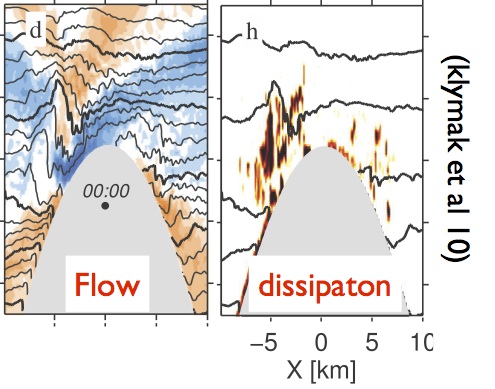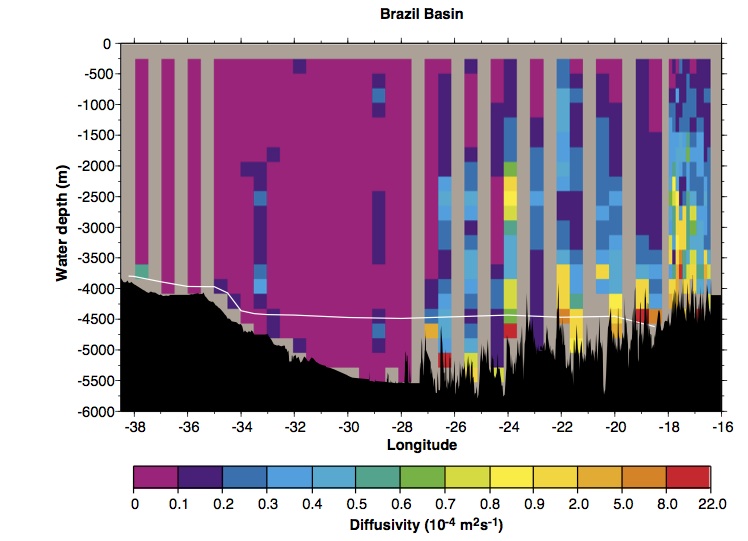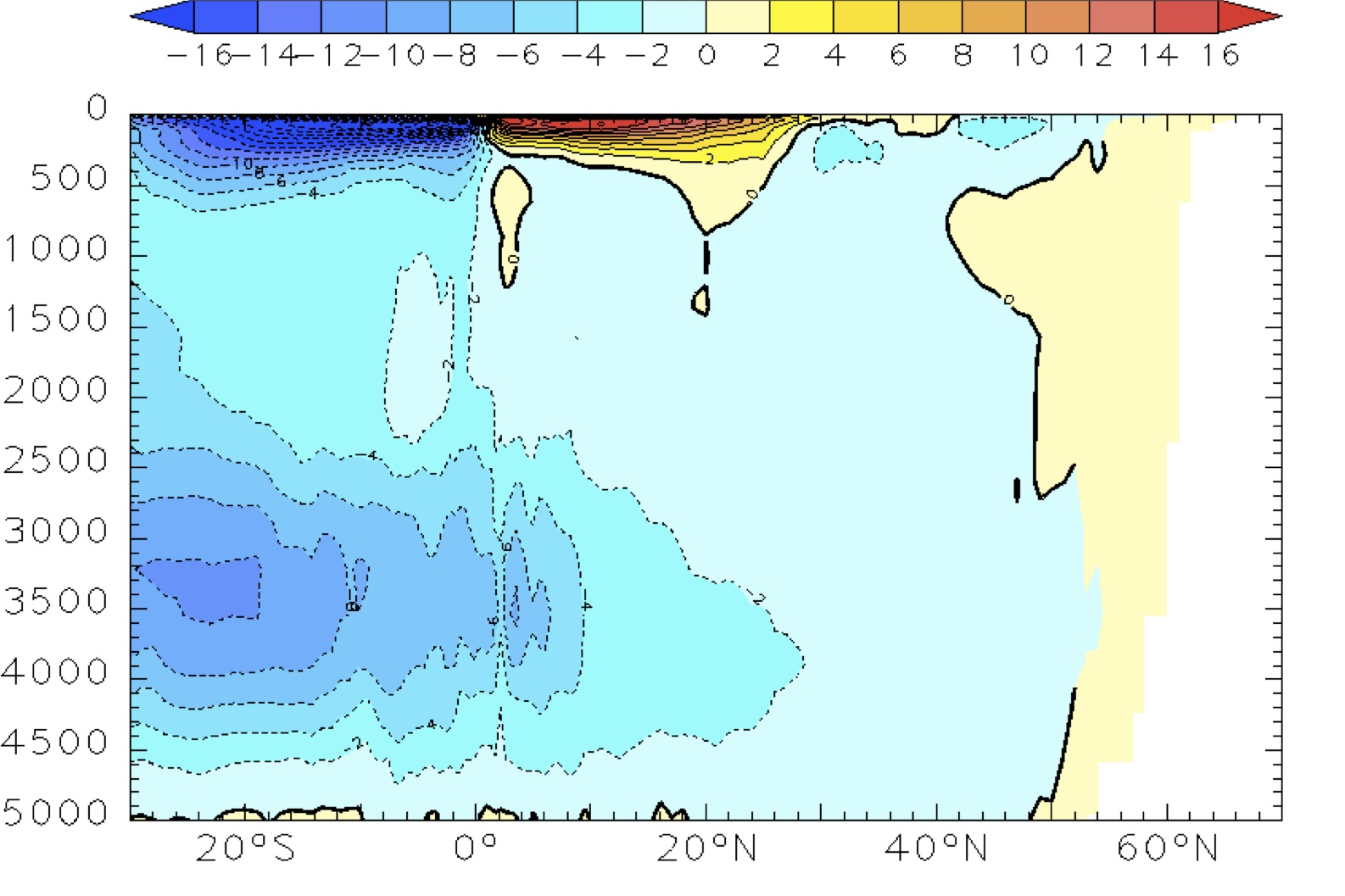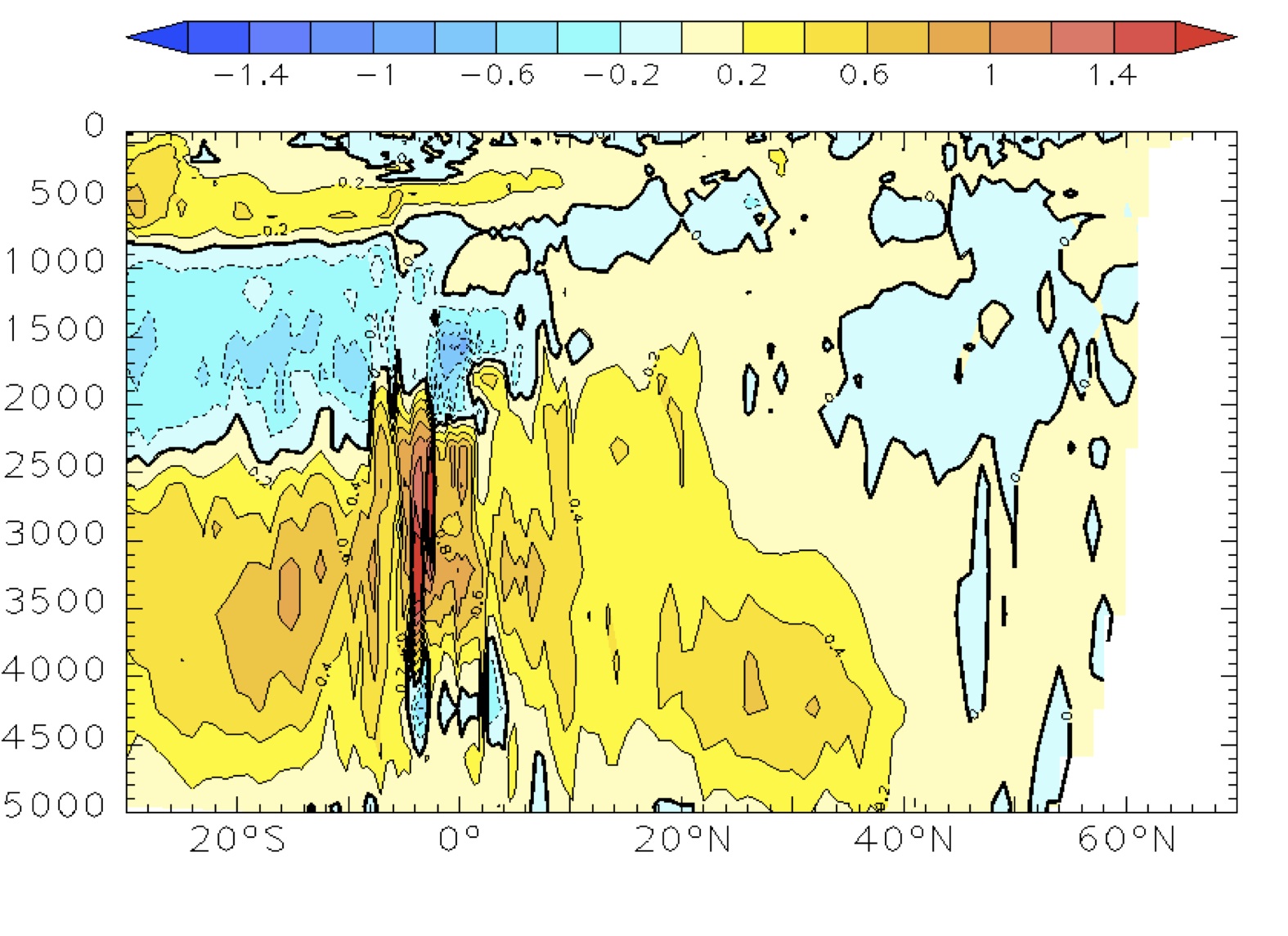work in progress
Nearfield: Internal tide dissipation near rough topography
Internal
tides
are generated where the barotropic tide sloshes over rough
topography. Globally there is about a TW of power going into
internal tides, which must dissipate somewhere. Here we
differentiate two types of processes that may dissipate these waves
relatively close to the generation site. First, very near
topography oscillatory motions may be subject to hydraulic control and
experience strongly nonlinear breaking. Second, higher-mode
internal waves may dissipate steadily as the propgate up and away
through nonlinear interaction with a background internal wave
field. We are seperately working on understanding, quantifying
and paramterizing these processes, as detailed below.
Strongly nonlinear wave breaking
Strongly nonlinear wave breaking
Strong flow over topographic barriers can lead to energetic turbulence. Recent observational and modeling work in Luzon Strait showcase the range of phenomenology possible, including convectively driven overturns very close to the sea floor (Alford et al 2011, Pinkel et al 2012, Klymak et al 2012, Buijsman et al 2012). Slightly further aloft, high-mode wave-like motions may achieve critical Froude numbers, leading to wave breaking (Klymak et al 2008).
 |
Figure 2: Simulations of
tidal flow over a Gaussian obstacle using realistic stratification.
Left panel shows velocity amplitude (color) and isopycnal locations for
a particular snapshot. Right panel shows the associated turbulent
dissipation rate. Reproduced from Klymak et al 2010. |
An initial attempt at parameterizing this effect was presented by Klymak et al 2010. Current efforts are focusing on refinement of the existing paramterization, and evaluation of how much of the phenomenology exhibited in Luzon Straight (for eample) is captured by the existing scheme.
Weakly nonlinear wave breaking
The now-canonical figure below shows elevated turbulence of the rough topography of the Eastern Brazil Basin, that steadily decreases in magnitude with increasing height above bottom. The suggestion is that high-mode internal tides are generated near the bottom, and propgate slowly upwards. As they go, they steady lose energy through weakly nonlinear wave-wave interactions with an ambient internal wave field.
| Figure 3:
Depth-longitude section of diapycnal diffusivity in the Brazil Basin
inferred from velocity microstructure observations. Reproduced from
Polzin et al 1997. |
 |
An initial attempt to parmameterize such patterns globally was presented by Jayne and St. Laurent (2001) and St. Laurent et al (2002). Test implementation in ocean GCMS showed significant changes in the deep and abyssal circulation when this scheme was used instead of a more common latterally invariant diffusivity profile. More recently, Polzin et al 2009 presented a revised version of this paramterization that replaced the ad-hoc vertical decay scale with one based on the physics of wave-wave interaction rates. The new version is being implemented and tested in the GFDL GOLD model. Melet et al 2012 find that even with this relatively modest change in the vertical structure of diffusivity produces order 10% differences in deep circulation (Figure 4 below).
 |
 |
Comments or inquiries please contact Dr. Jennifer MacKinnon [jmackinn at ucsd dot edu]
 |
We gratefully acknowledge funding from
NSF and NOAA |
 |